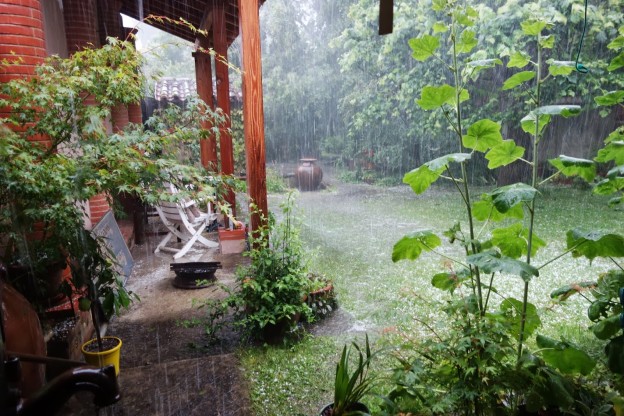With further extreme weather and flooding expected, we thought it’s about time we wrote some of our top tips for rebuilding your garden after a particularly harsh winter of flooding.
With any luck you saw our top tips on how to prepare your garden for winter, not to worry if not – this mini-guide will give you enough information and advice to get your garden back into shape post-flooding in time for spring.
After having spent money and labour, garden flooding can often be a devastating experience – the UK in particular has been victim to some extreme weather in recent weeks, causing immeasurable damage throughout the country.
With climate patterns changing, it is the unfortunate reality that many of us will be faced with the distinct possibility of further floods. That’s why it’s so important to not only be prepared for such an event, but also have an action plan in place for when the floods have passed.
Before You Begin The Rebuilding Process
If the water levels start to subside, don’t take this as a sign that the worst is over. Water levels following floods can fluctuate immensely – to check the likelihood of further problems call your local authority for further information. Once the situation has been deemed safe (and only then) it should be fine for you to commence work on your garden.
According to the Met Office and the BBC, the UK is in for yet more severe weather conditions in the coming weeks. Fourteen severe flood warnings are in place in Berkshire and Surrey, while two remain in Somerset.
Assess the Damage
The first step you want to take is to estimate and analyse the level of damage done to your garden, furniture and exterior buildings you may have. This is particularly important for insurance purposes. Do not discard any items prior to checking with your insurance company. It is possible your policy will allow you to claim for a wide variety of items, including plants.
Make sure you take photographs and document the damage immediately after it has occurred, just incase it’s severe enough to make an insurance claim.
Safety First
While it’s tempting to try and salvage your crops, avoid the temptation of consuming vegetables or fruits that may have come into contact with contaminated sewage, oil or any other harmful chemicals. The risk of infection is minute, but nevertheless not one worth taking. Take not of your crop rotation for your reference.
Before handling anything that’s come into contact with contaminated water (or if it still is!), make sure you are adequately dressed and that you are using latex gloves. If you have any cuts or open wounds, make sure they are covered at all times. It is imperative that your tetanus inoculation is current and up to date.
Help Your Soil
Once your garden’s soil has endured the worst, help speed up the recuperation process by digging a plot. This will relieve compaction. You may also want to use a fork to further assist the drainage process. In order to prevent compaction as a result of your weight, use a wooden board to increase your surface area.
Once Your Soil is Dry
Green manure is the ‘secret ingredient’ when it comes helping your soil dry more quickly. In addition, it can also improve the structure of the soil. Sow a generous amount of green manure and you should see a positive improvement. Once spring has arrived, you can dig the manure back into the soil to inject a good dosage of nutrients.
Replace your Garden’s Topsoil
The value of high quality topsoil cannot be overestimated, because without it, our plants, lawn and food crops struggle to survive. Topsoil has two distinct layers. The visible layer will be organic materials at different levels of decomposition. Just below this layer will be completely decomposed materials called ‘humus’. So, for example, when you make your own garden compost, you are actually creating a type of humus.
It’s imperative that you replace this layer of topsoil after the flooding would have inevitably removed it, as the soil is the most important purchase you will make for your landscaping or garden.
For more information on premium and contract grade topsoils contact us on 01306 877540.
Raised Beds
If you wish to continue raising vegetables, it may be an idea of using raised beds. This will protect your crop against most floods, keeping your crop above the resultant water levels. using raised beds will prevent contamination and your field becoming waterlogged.
So there you have it! Our top tips for rejuvenating your garden after a flood. For more information on landscape and gardening supplies, please contact Bury Hill Landscape Supplies Ltd. for our range of products or for more information on 01306 877540.




